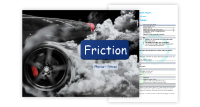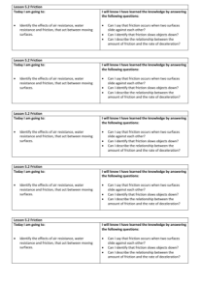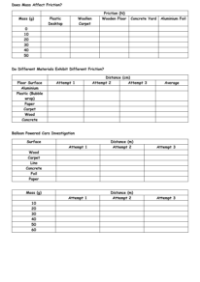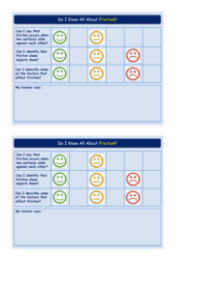Friction - Lesson Plan
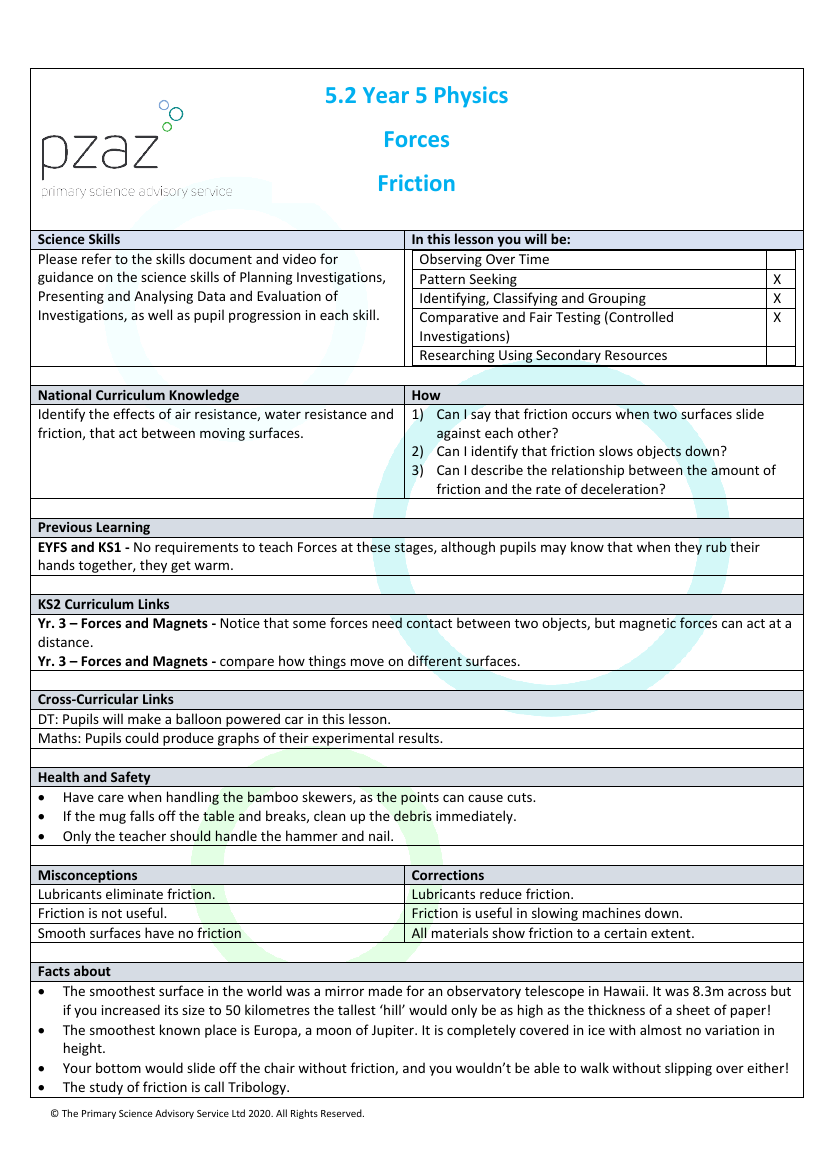
Science Resource Description
The lesson plan from The Primary Science Advisory Service Ltd focuses on exploring friction and its effects, tailored for Year 5 students. It begins by defining friction as the resistance that occurs when two surfaces slide against each other, which can cause objects to slow down. The lesson aims to help students understand how friction affects movement and the rate of deceleration. Building on previous knowledge, such as the warming effect of rubbing hands together, the lesson progresses to more complex concepts. It links to the National Curriculum, showing how friction is relevant to other subjects like Design and Technology, where students will create a balloon-powered car, and Maths, through graphing experimental results. Health and safety considerations are highlighted, especially when handling sharp objects like bamboo skewers or when performing demonstrations that involve potential hazards.
The lesson comprises a series of activities, each designed to illustrate different aspects of friction. One demonstration shows how friction between a mug and a handkerchief, as well as between the handkerchief and a table, can be overcome with a swift motion. Another experiment investigates whether mass affects friction by pulling a Tupperware tub across various surfaces and measuring the force required. In the car and ramp activity, students release a toy car down a ramp covered with different materials to observe how surface roughness affects the car's travel distance. Finally, the balloon-powered car activity encourages problem-solving as students construct cars and test how far they travel on different surfaces or with varying masses. Each activity is accompanied by questions to provoke thought and understanding about the principles of friction. The plenary session is an opportunity for students to reflect on what they have learned about friction, its occurrence, and its impact on motion.

